AUGUSTA — Beau Clark watched two artists using diamond saws on large blocks of granite, the smaller of the two 1,000 pounds in size.
And as the 10-year-old shook his head, two other classmates at Richmond Middle School stood with their mouths open.
“The way the artists take the granite and turn it into people and animals is cool,” Clark said. “I like seeing it in nature. I like it better outside, in the fresh air.”
Three years ago the Viles Arboretum had 16 stone sculptures by Maine artists installed along an art trail that stretches nearly a half-mile across the 224-acre preserve. For the past two years, Maine artists have come to the arboretum to sculpt large pieces made from granite while school children watched and learned.
Last year, the students came from schools in the Augusta area. This year, grants from the Maine Arts Commission and the Maine Stone Workers Guild helped make possible a five-day symposium that brought children from schools as far away as Trenton to the east and Kennebunkport to the south.
The students, ranging from grade schoolers to high schoolers, watched 13 professional artists cut, saw and shape blocks of stone – working in conditions that included cold, wind and even a downpour. The students received hands-on instruction from artists Anne Alexander of Windham and Gerry Goff of Mount Vernon.
Seeing the artists work outside was an eye-opening experience for many of them.
“For the children, they must think all artists work inside stuck in a studio. For them this is probably a discovery. It’s unconventional,” said artist Lise Becu, 58, of Tenants Harbor.
“I work outside from April to December. I love to work outside. I love the natural light. My pieces face south when I work, so I can see the light changing as the sun moves east to west. It makes it kind of come alive.”
An artist of 40 years, Becu said the Maine coast provides inspiration and subject matter.
“This piece has a peacock above and mother and child (below),” she said, looking up at her sculpture. “The peacock feathers around it speak of protection; the eyes of the feathers are watching. Just as the mother is watching the child.
“I want to show benevolence and peacefulness. That’s what I want to be remembered for: showing peace in nature.”
Alexander said stone artists need to work outside because of the stone dust. However, while she works in different mediums, she prefers to work in nature, and to show her art outside.
“I love just looking up at the trees and the breeze. I mostly do work that you can show outside because it comes more alive in the woods or in a field than in a gallery,” Alexander said. “When it’s outdoors, the environment helps show scale.”
Belfast High junior Katy King, 16, said that before attending the symposium, she never imagined artists working outside – let alone in a heavy rainstorm. She said the combination of seeing an outdoor gallery full of sculpture and professional artists creating work in the storm was the “experience of a lifetime.”
“Watching professional artists sculpt large pieces of stone outdoors was fascinating … I had really only ever imagined artists working in studio spaces,” King said. “The day we went was the heaviest downpour that I have ever seen, and looking back on it, I can’t imagine it any other way. The dedication of the artists at work was remarkable.”
While several stone artists worked under trees throughout the symposium, five groups of students worked under a large tent. But the tent was located in a wind-swept field that was cold and damp. The conditions didn’t seem to faze the 160 students who were taught to chisel alabaster.
“Maybe a few lost focus, but not many,” Alexander said.
Hoff said when students are out of a classroom, in a wild, ever-changing environment, there is more mental stimulation, and they focus better.
“I think they forget about other things when they are out of their element. I think they feel like real artists,” Hoff said.
As for Clark, the Richmond fifth-grader, seeing sculpture displayed in a field was enough to make him want to find more outdoor art.
“I want to come back in the winter when the leaves have fallen and there is snow out, to see the art then,” Clark said.
Send questions/comments to the editors.


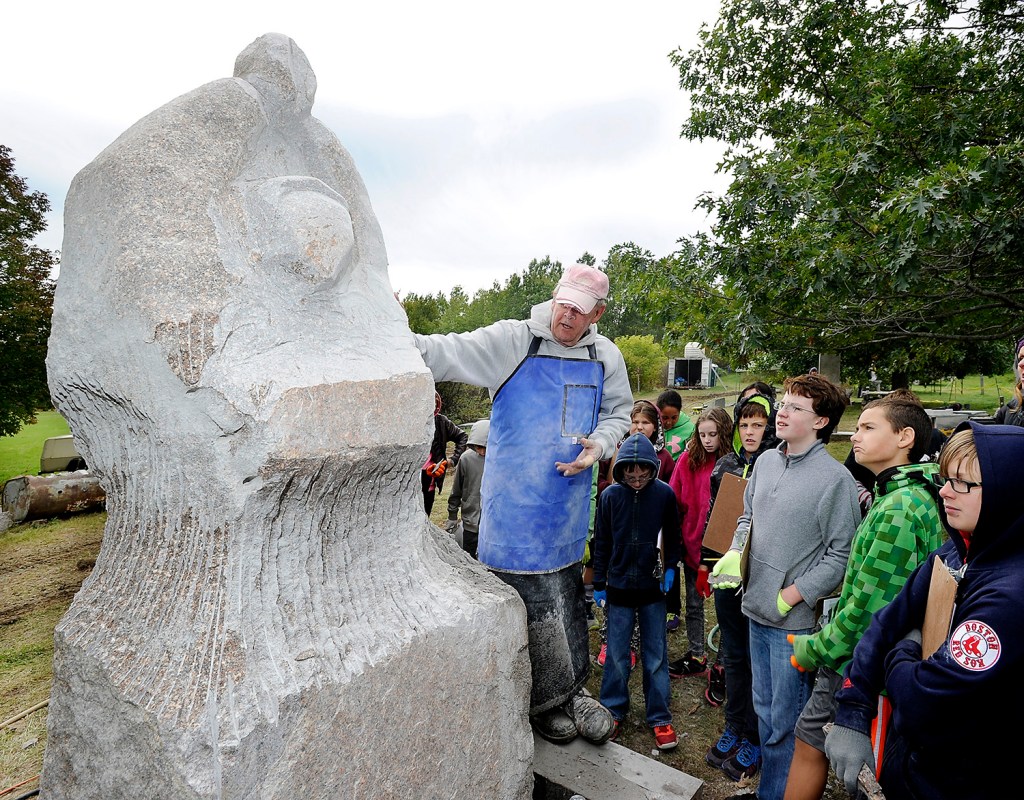
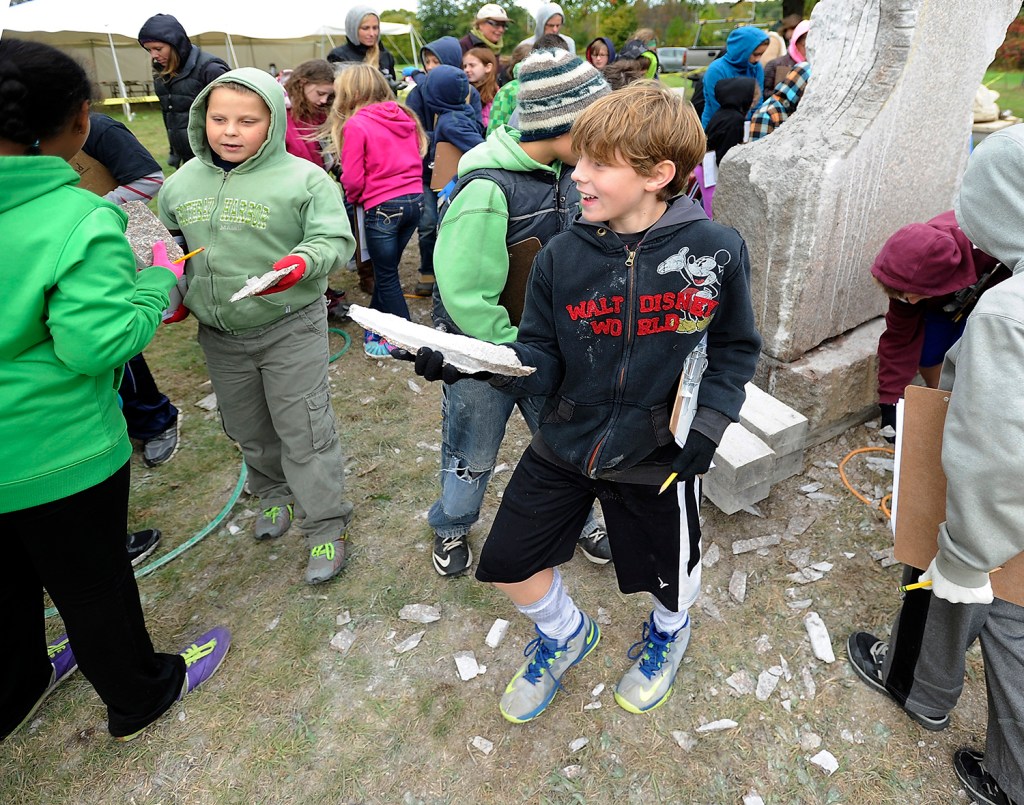
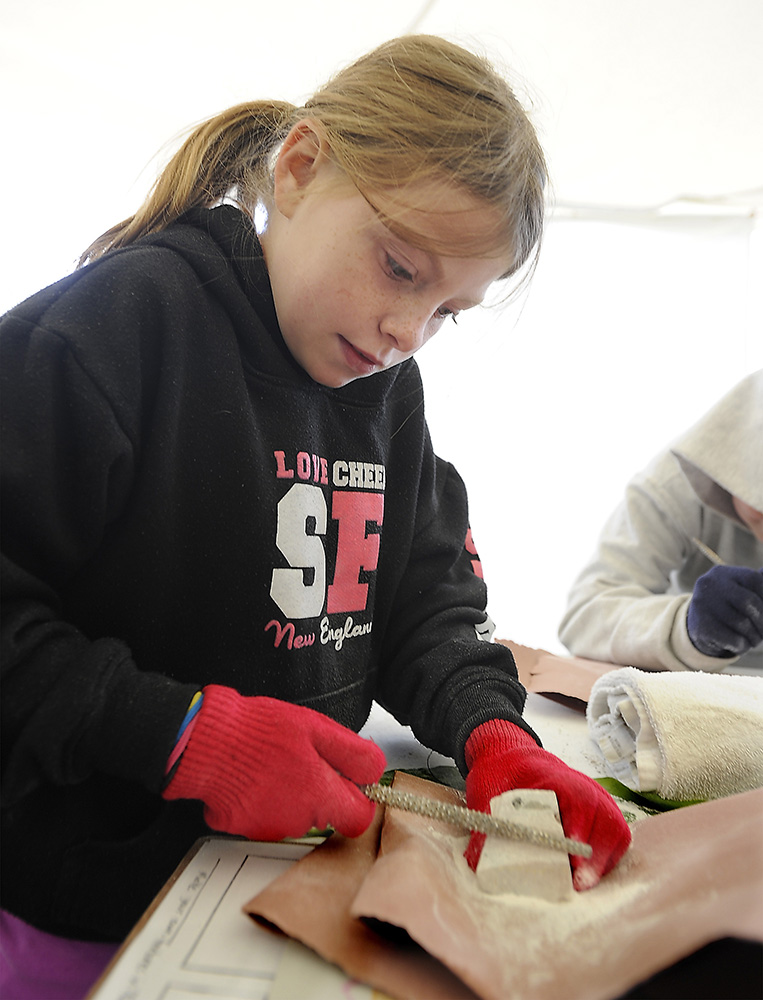
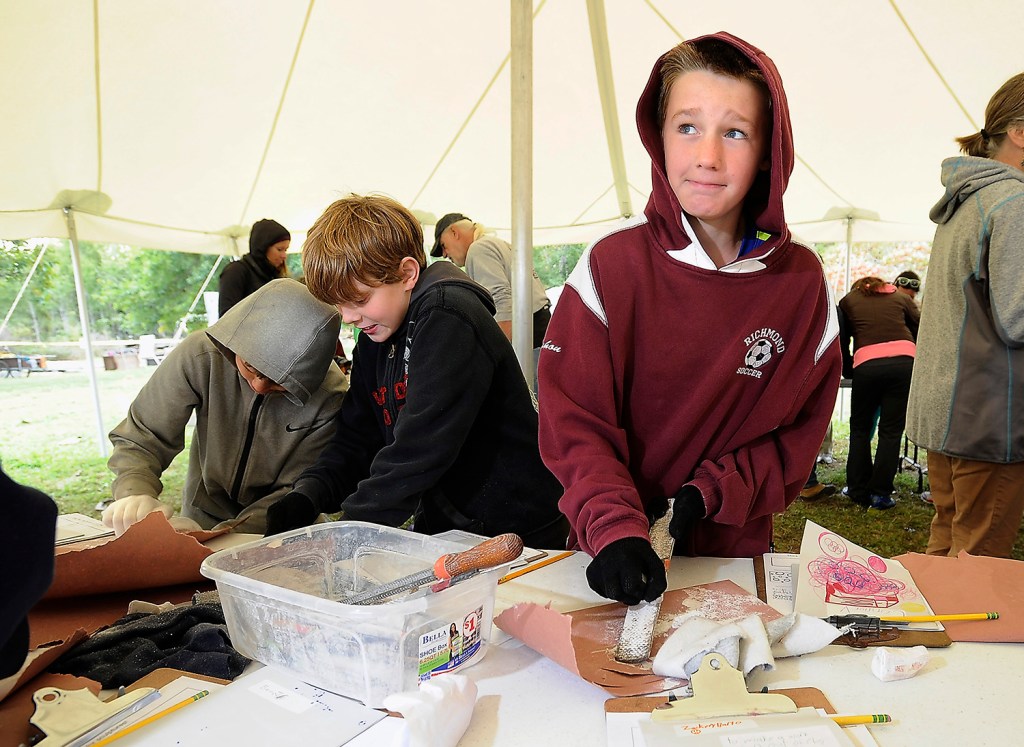
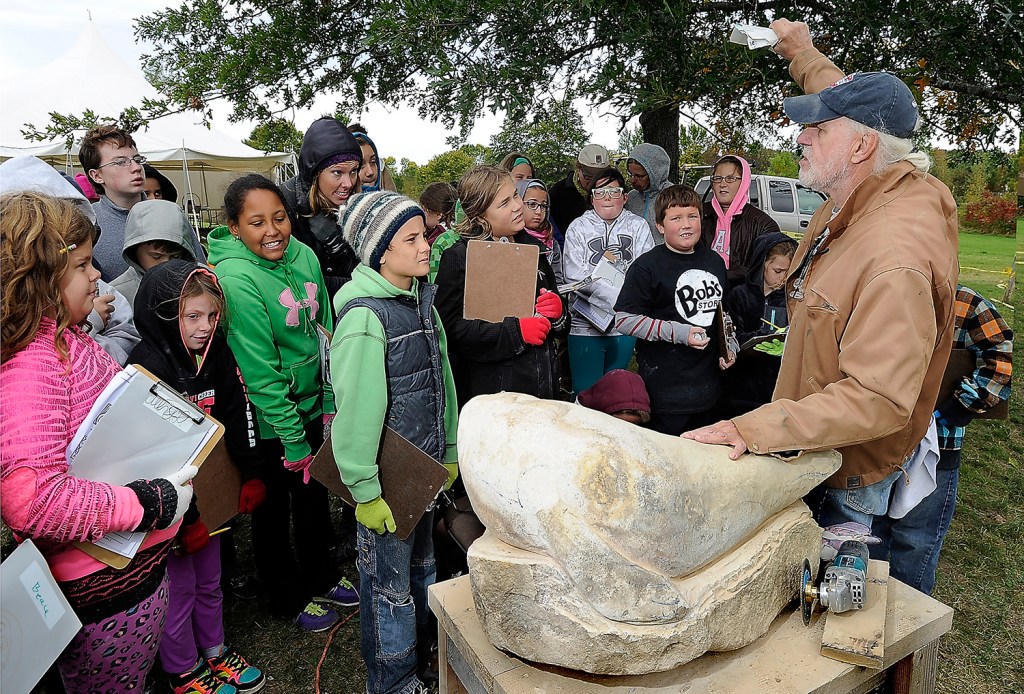

Success. Please wait for the page to reload. If the page does not reload within 5 seconds, please refresh the page.
Enter your email and password to access comments.
Hi, to comment on stories you must . This profile is in addition to your subscription and website login.
Already have a commenting profile? .
Invalid username/password.
Please check your email to confirm and complete your registration.
Only subscribers are eligible to post comments. Please subscribe or login first for digital access. Here’s why.
Use the form below to reset your password. When you've submitted your account email, we will send an email with a reset code.